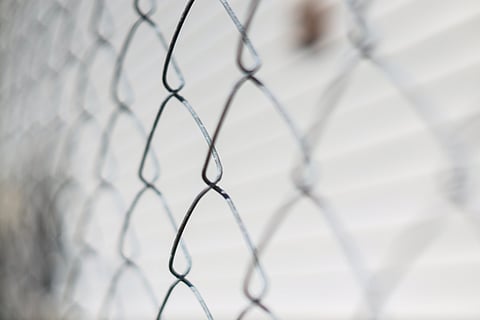OPINION: Clallam Bay Corrections Center Increases COVID-19 Risk on West End of Olympic Peninsula
by Megan Munk
As a resident of Forks, WA, I am encouraged to see that our community has been proactive in taking steps to minimize the impact of COVID-19 when it comes to our town. We closed parks, are staying at home, and made changes to our hospital and pharmacy protocols to limit contact.
But I am worried that we are not taking into account a large population that is within our community and currently incarcerated. As of May 5, 24 incarcerated people in Washington have tested positive for COVID-19, along with 36 prison staff members. Only twenty incarcerated people at Clallam Bay Corrections Center (CBCC), one of the local prisons on the West End of the Olympic Peninsula, have been tested.
We know that this virus can spread quickly even before it is identified and that is exactly why we are taking precautions in Forks to protect our community. We should ask the same of the Department of Corrections (DOC), which continues transferring incarcerated people between facilities.
In the article "What COVID-19 Means For America's Incarcerated Population — And How To Ensure It's Not Left Behind," written by a doctor, an epidemiologist, and a med student, the authors warn:
"With nearly a quarter of the world's prison population, the United States is home to an ailing prison health care system and its large aging subpopulation. Our nation's experience with tuberculosis, HIV and the ongoing hepatitis C epidemic has taught us that correctional settings are reservoirs of infectious diseases. Prisons push people into the paths of epidemics."
According to the Washington DOC website we have up to 858 men at CBCC and 381 men at the Olympic Corrections Center (OCC). These men are housed in close quarters and are routinely moved between facilities, which is contrary to Governor Inslee's "Stay Home, Stay Healthy" mandate. The men are not able to social distance or follow proper hygiene protocol with limitations on hand sanitizer in the prisons and personal property within their cells. The cleaning agent HEPASTAT 256 that DOC uses to clean facilities does not have the ethanol content high enough to meet the Center for Disease Control's disinfection guidelines. As COVID-19 moves through the prisons, we are likely to see an explosion of cases inside, as is happening in Marion Prison in Ohio State, where 80% of prisoners have tested positive for the virus. We are also likely to see an uptick in the outside community as prison workers, without proper protective gear, are being exposed to the virus daily at work and returning to their families at night. DOC has no clear procedures to keep both populations safe during a pandemic that is highly contagious in this way and, without proper testing, incredibly hard to detect.
I worry that our community does not have the resources to handle this situation. And as we are being proactive in many ways, we must not forget about the DOC system and how it is increasing our risk and exposure. We are at greater risk, along with other rural communities, where over 350 prisons have been built since the 1980s.
The hospital catchment area here in Forks is 10,000 people and includes La Push, the Hoh, possibly Neah Bay. UW/Harborview hospital takes our most seriously ill or injured patients, but they're stretched by the response to the virus at this time. Healthcare professionals in our community lack the proper personal protective equipment (PPE) and are putting their own lives at risk each day to fight the spread of COVID-19. Our doctors and nurses are already overburdened. If and when the virus spreads throughout our local prisons, the spread will affect incarcerated loved ones, guards and other prison employees, and our local nurses and doctors. When we are flown out for medical care, we are usually flown out alone. Our systems must adapt and take this crisis seriously.
There are many things that could be done to minimize the risk to everyone. As a society, we need to think about alternatives to incarceration and creating systems of transformative justice. Reducing the numbers dramatically in our prisons and jails is an essential public health measure. According to a March 26 CBS News report:
"U.S. Attorney General William Barr … directed the Bureau of Prisons to increase the use of home confinement among older inmates with underlying conditions as a means to mitigate the spread of coronavirus within the country's prison system."
We can start by releasing inmates that are immunocompromised, all incarcerated youth, and those who are close to the end of their sentences. Let those individuals out who do not pose a threat to public safety. And an important way to ensure they don't pose a risk to public safety, regardless of the crime they are incarcerated for, is to ensure that conditions they are returning home to set them up for success.
Many of the people incarcerated are immunocompromised, and the stress of living in prison will exacerbate the condition for anyone who contracts COVID-19. These incarcerated people are our neighbors here on the West End. Taking real care of them is part of taking care of our community. If real changes are not made, the staff in these prisons — our neighbors and loved ones — will also become sick, putting our community's health at risk, not to mention the devastating economic impacts.
Please reach out to your local city council, DOC officials locally at CBCC and OCC as well as headquarters in Olympia, our local Department of Health and Governor Inslee's office and ask them to take immediate action to reduce our incarcerated populations now.
Featured image: Alex Garland
Help keep BIPOC-led, community-powered journalism free — become a Rainmaker today.


